Ep. 329 | The History of Yunnan Province (Part 2)
We pick up after the fall of the Tang Dynasty and Nanzhao Kingdom. The main focus in this Part 2 episode will be the rise and fall of the Dali Kingdom and the Mongol Conquest of Dali in 1253. We'll also take a quick look at the complicated period between the fall of Nanzhao and the founding of the Dali Kingdom. We'll close with the fall of the Yuan Dynasty and the aftermath that occurred in Yunnan in the 14th century.
Listen On Your Favorite Podcast Player
Terms in Episode
| Pinyin/Term | Chinese | English/Meaning |
|---|---|---|
| Yúnnán | 云南 | A landlocked province in the southwest of the PRC. Population is around 50 million. The capital of the province is Kunming. Yunnan borders the provinces of Guizhou, Sichuan, Guangxi, and Tibet as well as Southeast Asian countries: Vietnam, Laos, and Myanmar. |
| Zhōu | 周朝 | Ancient Bronze-Age dynasty in China that lasted from 1046 to 256 BC |
| Táng | 唐朝 | Dynasty in China that lasted 618-907 |
| Diān Kingdom | 滇国 | The Dian Kingdom, established by the Dian people, a non-Han metalworking civilization from the late Spring and Autumn period until the Eastern Han dynasty. The Dian language was likely one of the Tibeto-Burman languages. The Han Empire's annexation of the Dian Kingdom in 109 BC eventually led to the establishment of the Yizhou commandery. Dian culture started from at least the 8th century BC, until it fell under the control of the Han dynasty in 109 BC |
| Kūnmíng | 昆明 | Capital city of Yunnan Province and location of Lake Dian and the ancient Dian Kingdom |
| Dàlǐ Kingdom | 大理国 | A state situated in modern Yunnan, from 937 until 1253. Dali today is the county-seat of the Dali Bai Autonomous Prefecture in northwestern Yunnan. Dali City is administered through 12 township-level districts, two of which are also commonly referred to as Dali. Dali City is located in western Yunnan, approximately 25 km (160 mi) northwest of the provincial capital of Kunming |
| Cuànmán | 爨蛮 | An ethnic group in northern Yunnan. They came into power after assisting Zhuge Liang's Southern Campaign and dominated Yunnan during the Northern and Southern dynasties period. They were defeated by the Sui dynasty in 602 and split into the Baiman and Wuman, allegedly the ancestors of modern-day Bai people and Yi people |
| Nánzháo Kingdom | 南诏国 | A dynastic kingdom that flourished in what is now southern China and northern Southeast Asia during the 8th and 9th centuries. It was centered on present-day Yunnan |
| Sòng Dynasty | 宋朝 | Dynasty in China that lasted 960-1279 |
| Zhèng Mǎisì | 郑买嗣 | Overthrower of the Nanzhao Kingdom and founder of Da Chang He |
| Méng family | 蒙家族 | All Nanzhao Kings were surnamed Meng, going back to the founder |
| Xìnúluó | 细奴逻 | Seventh Century chieftain of the Mengshe tribe |
| Dà Chánghé | 大长和国 | the Great Kingdom of Eternal Peace, foundede by Zheng Maisi. It lasted 902-928 |
| Five Dynasties Ten Kingdoms | 五代十国 | The period immediately following the fall of the Tang. It lasted 907 to 979 |
| Zhèng | 郑 | Zheng, the family surname of the Da Changhe rulers |
| Former Shǔ | 大蜀/前蜀 | one of the Ten Kingdoms that existed in 907–925. It was the third state named "Shu" on the same territory, after the Ancient Kingdom of Shu. The second one being Shu Han during the Three Kingdoms |
| Southern Hàn | 南汉国 | 917-971, one of the Ten Kingdoms, located on China's southern coast, controlling modern Guangdong and Guangxi. Their capital was located in present-day Guangzhou |
| Later Táng | 后唐国 | 923-937, a short-lived dynasty of China and the second of the Five Dynasties during the Five Dynasties and Ten Kingdoms period. |
| Yáng Gānzhēn | 杨干贞 | Overthrew the Da Changhe Kingdom and established the Da Tianxing Kingdom |
| Dà Tiānxīng | 大天兴 | A short lived state that lasted less than a year (928-29). It was replaced by another statre called Da Yining |
| Dà Yíníng | 大义宁 | Successor state to Da Tianxing. This third of the three polities that were sandwiched in between the Nanzhao. and Dali Kingdoms, lasted from 929-937 |
| Duàn Sīpíng | 段思平 | 893-944, founding emperor of Dali. He reigned from 937-944 |
| Wūmán | 乌蛮 | Indigenous people of the Cuanman era, 3rd-4th Century. See Cuanman above |
| Yáng Zháo | 杨诏 | Final Da Yining Emperor |
| Zhào Kuāngyìn | 赵匡胤 | The Song founding Emperor Taizu. Lived 927- 976. He reigned from 960 until his death in 976. |
| Khitan | 契丹 | A historical nomadic people from Northeast Asia who, from the 4th century, inhabited an area corresponding to parts of modern Mongolia, Northeast China and the Russian Far East. The Khitan people founded and led the Liao dynasty (916–1125),which dominated a vast area of Siberia, Mongolia and Northern China |
| Tanguts | 党项 | A Sino-Tibetan people that founded and inhabited the Western Xia dynasty. After the collapse of Tang dynasty, the Tanguts established the Western Xia. |
| Jürchens (Nǚzhēn) | 女真 | A term used to collectively describe a number of East Asian Tungusic-speaking people, descended from the Donghu people. They lived in northeastern China, also known as Manchuria, before the 18th century. The Jurchens were renamed Manchus in 1635 by Hong Taiji |
| Dàdù River | 大渡河 | A major river located primarily in western Sichuan province. The Dadu flows from the eastern Tibetan Plateau into the Sichuan Basin where it joins with the Min River, a tributary of the Yangtze River. |
| Kāifēng | 开封 | Capital of the Northern Song, located on the banks of the Yellow River |
| Huīzōng | 宋徽宗 | Northern Song emperor who reigned 1100-1126 |
| Qīnzōng | 宋钦宗 | Final Northern Song emperor, and son of Huizong, who reigned 1126-1127 |
| Western Xià | 西夏 | Also known as the Tangut Empire, Western Xia was a Tangut-led Buddhistimperial dynasty of China that existed from 1038 to 1227. At its peak, the dynasty ruled over the modern-day northwestern provinces of Ningxia, Gansu, eastern Qinghai, northern Shaanxi, northeastern Xinjiang, and southwest Inner Mongolia, and southernmost Outer Mongolia |
| Yáng Yìzhēn | 杨义贞 | First he killed Gao Shengtai, tryoing to seize the throne of the Dali Kingdom. He declared himself Emperor Guǎng’ān 广安皇帝 and then was promptly killed in 1080 |
| The Gāo Family | 高家族 | The powers behind the throne in the Dali Kingdom. They ruled and the Duan's reigned. The period of the Yang's domination of Dali politics is known as the Later Dali Kingdom |
| Duàn Sīlián | 段思廉 | Dali king from 1045-1075 |
| Tài Bǎo | 太保 | The title of Grand Guardian |
| Gāo Zhìshēng | 高智升 | The Gao Family ancestor who was able to parlay his government position into the political leadership of the Dali Kingdom |
| Duàn Zhèngmíng | 段正明 | Dali king from 1082-1094. In 1094, Gao Shengtai forced Duan Zhengming to relinquish the throne to him and renamed the Dali Kingdom to "Dazhong Kingdom". Gao Shengtai ruled briefly until his death in 1096, after which the throne was returned to the Duan family – Duan Zhengming's younger brother, Duan Zhengchun, became the new ruler and restored the kingdom's former name. |
| Gāo Shēngtài | 高昇泰 | Died 1096. Gao Shengtai was the founder and the only emperor of the short-lived Dazhong Kingdom from 1094 until his death in 1096. |
| Dà Zhōng Guó | 大中国 | the Great Central Kingdom. See aboce Gao Shengtai |
| Gāo Tàimíng | 高泰明 | Son of Gao Shengtai who was instructed to return the throne to the Duan's |
| Duàn Zhèngchún | 段正淳 | See above Duan Zhengming |
| Yuán Shìkǎi | 袁世凯 | 1859 -1916, a Chinese military and government official who rose to power during the late Qing dynasty and eventually ended the Qing dynasty rule of China in 1912, later becoming the Emperor of China, but not for long |
| Duàn Yù | 段誉 | The 16th emperor of the Dali Kingdom, reigning between 1108 and 1147. Following a family tradition, Duan's father, Duan Zhengchun, abdicated and became a monk in 1108. Duan succeeded his father as the emperor of Dali |
| Dàlǐ Xiànzōng | 大理献宗 | The Temple name of Dali King Duan Yu. See above |
| Tàizǔ | 太祖 | The name "Taizu" means Grand progenitor' a temple name typically, but not always, used for Chinesemonarchs who founded a particular dynasty. |
| Jīn Dynasty | 金朝 | Also known as the Great Jin (Chinese: 大金; pinyin: Dà Jīn). The Jīn was an imperial dynasty of China, founded by the Jürchens, that existed between 1115 and 1234. They overthrew the Northern Song in 1127 |
| Duàn Xīngzhì | 段兴智 | The Dali king who was quick to surrender to the Mongols. He reigned 1251-1254 |
| Níngxià | 宁夏 | Province in northwest China, also known as the Ningxia Hui Autonomous Region |
| Gānsù | 甘肃 | Province in northwest China. The capital is Lanzhou |
| tǔsī | 土司 | Tusi, often translated as "headmen" or "chieftains", were hereditary tribal leaders recognized as imperial officials by the Yuan, Ming, and Qing dynasties. They ruled certain ethnic minorities in central China, western China, southwestern China, and the Indochinese peninsula nominally on behalf of the central government. |
| Chóngqìng | 重庆 | Formerly part of eastern Sichuan province, Chongqing is now a municipality reporting directly to Beijing |
| Toluid War | The Toluid Civil War was a war of succession fought between Kublai Khan and his younger brother, Ariq Böke, from 1260 to 1264. Möngke Khan died in 1259 with no declared successor, precipitating infighting between members of the Tolui family line for the title of Great Khan that escalated to a civil war | |
| Yúnnán Administrative Province | 云南行省 | The name of Yunnan Province, as created by the Mongols |
| Guìzhōu | 贵州 | Interior province in west China bordering Yunnan |
| Zhū Yuánzhāng | 朱元璋 | The founder of the Ming Dynasty, also known as the Hongwu Emperor. He reigned 1368-1398 |
| Khanbaliq | 元大都 | Also known by its Chinese name, Dadu. It was the winter capital of the Yuan dynasty of China in what is now Beijing. It was located at the center of modern Beijing. |
| Basalawarmi | 把匝剌瓦爾密 | Died1382, commonly known by his hereditary noble title, the Prince of Liang, was a Yuan dynasty prince and loyalist who fought against the Ming dynasty |
| Prince of Liáng | 梁王 | The title was revived under the Yuan dynasty as a hereditary appanage for one of the sons of Kublai Khan. The Princes of Liang served as the Yuan viceroys of Yunnan. By far the most famous was Basalawarmi (d. 1382),who continued his family's fight against the Ming long after the fall of Khanbalik in 1368 |
| Hóngwǔ Emperor | 洪武帝 | See Zhu Yuanzhang above |
| Northern Yuan Dynasty | 北元 | A dynastic regime ruled by the MongolBorjigin clan based in the Mongolian Plateau. It existed as a rump state after the collapse of the Yuan dynasty in 1368 and lasted until its conquest by the Jurchen-led Later Jin dynasty in 1635 |
| Esen | 也先 | Also known as Esen Taishi. He was a powerful Oirat taishi and the de facto ruler of the Northern Yuan dynasty between 1453 and 1454. He is best known for capturing the Emperor Yingzong of Ming in 1450 in the Battle of Tumu Fortress and briefly reuniting the Mongol tribes. The Four Oirat reached the peak of their power under his rule. |
| Dayan Khan | Khagan of the Northern Yuan dynasty, reigning from 1480 to 1517. During his rule, he reunited the Mongols under Chinggisid supremacy. His reigning title, "Dayan", means "the whole" or "Long lasting" in Mongolian language as he was the longest reigning khaan of the unified Mongols | |
| Fù Yǒudé | 傅友德 | Died 1394, Fu was a Chinese general and a highly competent commander in the Ming navy. |
| Jīn Yǒng | 金庸 | 1924-2018, Also known by his real name Louis Cha Leung-yung GBMOBE (查良鏞). Best known by his pen name Jin Yong (Chinese: 金庸),was a Chinese wuxia ("martial arts and chivalry") novelist and essayist who co-founded the Hong Kong daily newspaper Ming Pao in 1959 and served as its first editor-in-chief. He was Hong Kong's most famous writer, and is named along with Gu Long and Liang Yusheng as the "Three Legs of the Tripod of Wuxia". |
| Mǎ Hé | 马和 | Admiral Zhèng Hé, famous for his voyages to Southeast Asia, South Asia, and the Middle East between 1405 and 1433 |
| Zhū Dì | 朱棣 | the Prince of Yān, Yǒnglè Emperor (reigned 1402-1424) |
| Yí | 彝族 | The Yi ethnic minority people of Yunnan |
| Tōnghǎi County | 通海县 | County located in Yuxi Prefecture-level City, Yunnan Province |
| Lake Fǔxiān | 抚仙湖 | A major lake in Yunnan that tretches through Chengjiang, Jiangchuan and Huaning Counties in Yunnan, spanning an area of 212 square kilometers. The lake is ranked third-largest in Yunnan, after Dian Lake and Erhai Lake. Also the deepest lake in Yunnan, it is 155 meters deep at its greatest depth. It is also the third-deepest fresh water lake in China, after Tianchi and Kanas Lake. |
| Khatso People | 喀卓人 | commonly known as the "Mongols in Yunnan", is a Mongolic ethnic group, mainly distributed in Tonghai County in the Yunnan Province of southwestern China. The Khatso people are descendants of the army personnel of the Yuan dynasty |
| Duàn Shì | 段世 | 1343-1384, Dali ruler who resisted Ming rule i Yunnan |
| hùkǒu | 户口 | A system of household registration used in China |
| Jiājìng Emperor | 嘉靖帝 | Ming emperor who reigned 1521-1567 |
| Mù Yīng | 沐英 | 1345–1392, a Chinese military general and politician during the Ming and an adopted son of its founder, the Hongwu Emperor |
| Bái people | 白族 | An East Asian ethnic group native to the Dali Bai Autonomous Prefecture of Yunnan Province, Bijie area of Guizhou Province, and Sangzhi area of Hunan Province. They constitute one of the 56 ethnic groups officially recognized by China. |
| Lìsù people | 傈僳族 | a Tibeto-Burman ethnic group who inhabit mountainous regions of Myanmar, southwest China, Thailand, and the Indian state of Arunachal Pradesh. About 730,000 Lisu live in Yunnan |
| Nàxī people | 纳西族 | an East Asian ethnic group inhabiting the foothills of the Himalayas in the northwestern part of Yunnan Province, as well as the southwestern part of Sichuan.Also called the Nakhi People, they are thought to have come originally from northwestern China, migrating south toward Tibetan populated regions, and usually inhabiting the most fertile riverside land, driving the other competing tribes farther up the hillsides onto less fertile land |
| Jǐngpō people | 景颇族 | The Jingpo people are an ethnic group who are the largest subset of the Kachin peoples, which largely inhabit the Kachin Hills in northern Myanmar's Kachin State and neighbouring Dehong Dai and Jingpo Autonomous Prefecture of China. There is also a significant Jingpo community in northeastern India's Arunachal Pradesh and Assam, as well as in Taiwan. While they mostly live in Myanmar, the Kachin are called the Jingpo in China |
| Dúlóng people | 独龙族 | Another ethbic group found in the Nujiang Lisu Autonomous Prefecture of Yunnan in the Derung Valley of Gongshan Derung and Nu Autonomous County. Another 600 can be found east of the Derung Valley, living in the mountains above the Nu River (Salween River) near the village of Binzhongluo in northern Gongshan Derung and Nu Autonomous County. |
| Nù people | 怒族 | The Nu population of 27,000 is divided into the Northern, Central and Southern groups. Their homeland is a country of high mountains and deep ravines crossed by the Dulong, Irrawaddy, and Nu Rivers. The name "Nu" comes from the fact that they were living near the Nu River 怒江, and the name of their ethnic group derives from there |
| Dǎi people | 傣族 | One of several Tai-speaking ethnic groups living in the Xishuangbanna Dai Autonomous Prefecture and the Dehong Dai and Jingpo Autonomous Prefecture of China's Yunnan Province. The Dai term can apply to groups in Laos, Vietnam, Thailand and Myanmar when Dai is used to mean specifically Tai Yai, Lue, Chinese Shan, Tai Dam, Tai Khao or even Tai in general |
| Sipsong Panna / Xīshuāngbǎnnà | 西双版纳 | Xishuangbanna, Sibsongpanna or Sipsong Panna, shortened to Banna, is an autonomous prefecture for Dai people in the extreme south of Yunnan Province, China, bordering both Myanmar and Laos. The prefectural seat is Jinghong, the largest settlement in the area and one that straddles the Mekong, called the "Lancang River" in Chinese |
| Chēlǐ Regional Pacification District | 车里 | Xishuangbanna was earlier called, by the Chinese, Cheli |
| Zhuàng people | 壮族 | a Tai-speaking ethnic group who mostly live in Guangxi. Some also live in the Yunnan, Guangdong, Guizhou, and Hunan provinces. With the Bouyei, Nùng, Tày, and other Northern Tai speakers, they are sometimes known as the Rau or Rao people. Their population, estimated at 18 million people, makes them the largest minority in China, followed by the Hui and Manchu. |
| Miáo | 苗族 | The Miao are a group of linguistically-related peoples living in Southern China and Southeast Asia. The Miao live primarily in southern China's mountains, in the provinces of Guizhou, Yunnan, Sichuan, Hubei, Hunan, Guangxi, Guangdong, and Hainan. Some sub-groups of the Miao, most notably the Hmong people, have migrated out of China into Southeast Asia. Following the communist takeover of Laos in 1975, a large group of Hmong refugees resettled in several Western nations, mainly in the United States, France, and Australia. |
| Yáo | 瑶族 | a government classification for various minorities in China and Vietnam who mainly reside in the mountainous terrain of the southwest and south of China |
| Shan, with Mon and Kachin states | 掸邦, 孟邦, 克钦邦 | States in Myanmar. Shan and Kachin in the north. Mon in the south |
| Jiāozhǐ | 交趾 | A historical region ruled by various Chinese dynasties, corresponding to present-day northern Vietnam |
| Lê Lợi | 黎利 | 1384/1385-1433, also known by his temple name as Lê Thái Tổ (黎太祖). This national hero of Vietnam was a rebel leader who founded the Later Lê dynasty and became the first emperor of the restored kingdom of Đại Việt after it was conquered by the Ming dynasty. |
| Lùchuān Campaign | 麓川之役 | The Luchuan–Pingmian campaigns were punitive expeditions carried out by the Ming dynasty under the rule of the Emperor Yingzong against the Shan-led State of Möng Mao near the frontier with Burma. They were carried out 1436–1449 |
| Zhuāng Qiáo | 庄蹻 | Chu general sent west on a expeditionary force in 279 BC. Founded the Dian Kingdom the following year |
| Xú Xiákè | 徐霞客 | 1587-1641, a Chinese travel writer and geographer of the Ming dynasty, known best for his famous geographical treatise, and noted for his bravery and humility. He traveled throughout China for more than 30 years, documenting his travels extensively. The records of his travels were compiled posthumously in The Travel Diaries of Xu Xiake |
| Diān Yóu Rìjì | 滇游日记 | The chapter of Xu Xiake's book that described his travels through Yunnan |
| Yùxī | 玉溪 | a prefecture-level city in the central part of Yunnan. Yuxi is approximately 90 kilometres (56 mi) south of Kunming. |
| Qǔjìng | 曲靖 | a prefecture-level city in the east of Yunnan, bordering Guizhou to the east and the Guangxi to the southeast. For this reason Qujing was called "Key between Yunnan and Guizhou" (滇黔锁钥) and "Throat of Yunnan" (云南咽喉) in the past |
| Zhū Yóuláng | 朱由榔 | The fourth and final emperor of the Southern Ming. He led the remnants of the Ming loyalists with the assistance of peasant armies to resist the Qing forces in southwestern China, but he was then forced to exile to Toungoo Burma and eventually captured and executed by Wu Sangui in 1662. His era title "Yongli" means "perpetual calendar". |
| the Yǒnglì Emperor | 永历帝 | See above Zhu Youlang |
| Kāngxī emperor | 康熙帝 | Long-reigning Qing emperor who reigned 1661-1722 |
| Li Zicheng | 李自成 | A Chinese peasant rebel leader who overthrew the Ming dynasty in 1644 and ruled over northern China briefly as the Yongchang Emperor of the short-lived Shun dynasty before his death a year later in 1645 |
| Shùn Dynasty | 大顺朝 | Officially called the Great Shun. Also known as Li Shun 李顺. This was a short-lived Chinese dynasty that existed during the Ming–Qing transition, 1644-45 |
| Zhāng Xiànzhōng | 张献忠 | 1606-1647, a Chinese peasant leader who led a peasant revolt in northern Shaanxi. He conquered Sichuan in 1644, and named himself king and later emperor of the Xi dynasty (西朝 or Great Xi 大西). His rule in Sichuan was brief, and he was killed by the invading Qing army. He is commonly associated with the massacres in Sichuan that depopulated the region. However, the extent of his killings is disputed |
| Great Xī dynasty. | 大西 | See Zhang Xianzhong, above |
| Lǐ Dìngguó | 李定国 | 1621-1662, a Chinese military general of the Southern Ming dynasty who fought against the Qing dynasty. Li was an adopted son of the rebel leader Zhang Xianzhong, and appointed a general in Zhang's army. After Zhang's death in 1647, he and other generals of Zhang's, including Sun Kewang, held out in Guizhou, then took over Chongqing in Sichuan, then south through Zunyi to take Guiyang in Guizhou in 1647\ |
| Sūn Kěwàng | 孙可望 | Onetime ally of Li Dingguo, later turned against him and was defeated and killed by Li Dingguo |
| Wú Sānguì | 吴三桂 | 1612-1678, he was a notorious Ming dynasty military officer who played a key role in the fall of the Ming dynasty and the founding of the Qing. In Chinese folklore, Wu Sangui is regarded as a disreputable Han Chinese traitor who played a pivotal role in several historical events, including the Battle of Shanhai Pass, Manchu invasion of China, the suppression of Southern Ming resistances and the execution of the Yongli Emperor, and eventually double-crossed both of his masters, the Ming and the Qing dynasties. |
| Yúnnán Fǔ | 云南府 | Former name of the city of Kunming. It means "Yunnan Capital" (or government seat) |








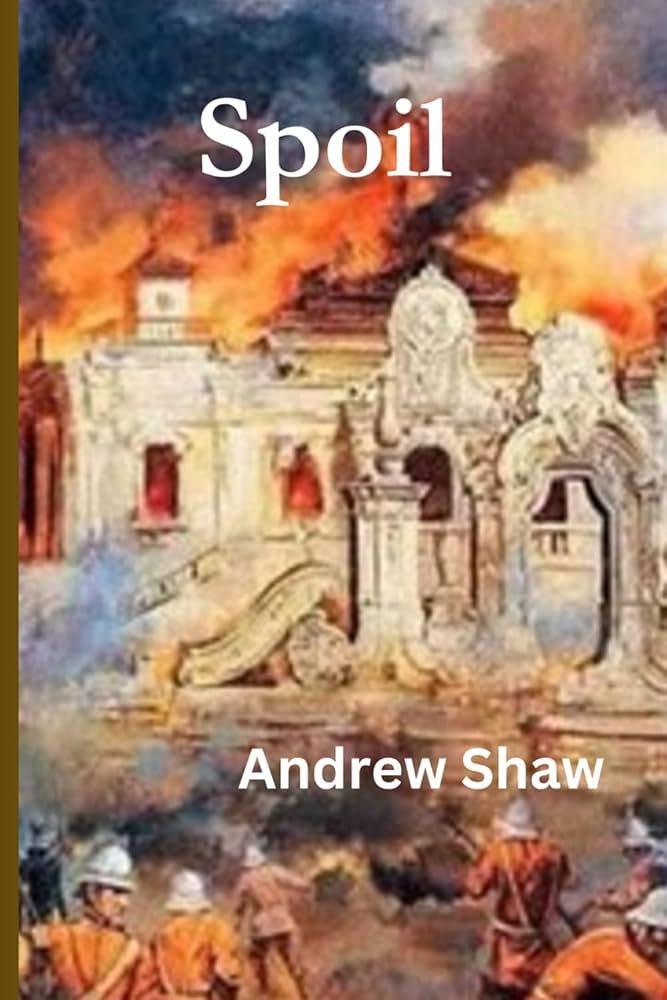


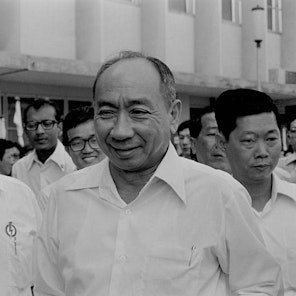

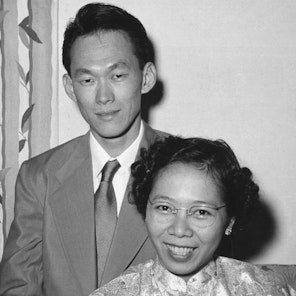
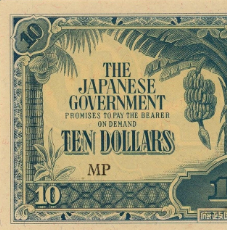
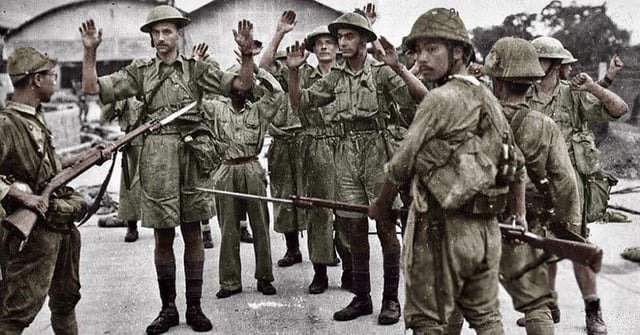
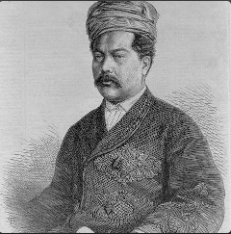
Former BBC reporter and master jade carver Andrew Shaw is back. What an informative interview this one turned out to be!